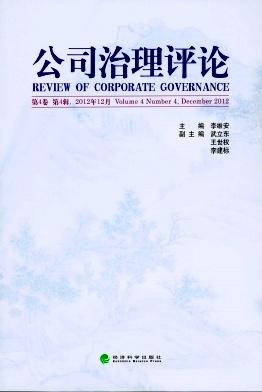Lessons About Franchise Risk From Yum Brands and Schlotzsky’s
引用次数: 0
Abstract
This Article presents YUM! Brands, Inc. disclosure information and presents valuable insight into the risks of starting a business that shares intellectual property with another party. YUM! is the parent of entities such as KFC, Pizza Hut, and Taco Bell with locations around the world. YUM! is particularly useful because of its mature operating concepts. Sandwich shop franchisor and operator Schlotzsky’s, Inc. presents a different aspect of shareholder and franchisee risk. The facts leading up to Schlotzsky’s bankruptcy filing represents what can go wrong with undercapitalized franchise operations because franchising is inherently risky for anyone. This Article seeks to answer questions facing all seeking to use a franchise concept: “What are the major risks perceived by those engaged in the universe of franchise businesses? What potential risks, if they become reality, may cause substantial increases in operating costs or threaten the very survival of the enterprise?” This Article provides a roadmap for understanding franchise risk and an opportunity to understand, and reflect upon the multi-million-dollar research, investment, and documentation of perceived system risks. Relevant annual report disclosures from YUM!, along with other YUM! documents, are discussed. Descriptive language from YUM!’s regulatory filings with the Securities and Exchange Commission is utilized to show what the management personnel of this franchise powerhouse perceive to be its major categories of risk exposure. The primary point of this Article is to repackage the risk disclosure language from these enterprises so that franchise entrepreneurs, their lawyers, and other readers may benefit. Our goal is to have a meaningful and scholarly impact on readers who are now, or will be, creating jobs through their efforts in growing businesses. They will proceed into the chaos of the capitalistic marketplace with valuable lessons in franchise risks. This Article has five sections. First, we provide a background and overview of franchising. Second, a primer on franchise law. Third, we examine YUM!, and focus on its risk disclosure language. Fourth, we describe the history and circumstances leading up to the 2004 bankruptcy of Schlotzsky’s. Lastly, we conclude with our thoughts on the lesson gained from disclosure documents and a bankruptcy investigation.百胜餐饮和Schlotzsky 's的特许经营风险
本文介绍YUM!品牌公司披露信息,并对与另一方共享知识产权的创业风险提出有价值的见解。YUM !是肯德基、必胜客和塔可钟等实体的母公司,在世界各地都有分店。YUM !由于其成熟的操作概念而特别有用。三明治店的特许经营商Schlotzsky, Inc.呈现了股东和特许经营商风险的不同方面。导致Schlotzsky破产的事实表明,资本不足的特许经营可能会出问题,因为特许经营对任何人来说都是有风险的。本文旨在回答所有寻求使用特许经营概念的人所面临的问题:“从事特许经营业务的人认为的主要风险是什么?”哪些潜在风险如果成为现实,可能会导致运营成本大幅增加,甚至威胁到企业的生存?”本文为理解特许经营风险提供了路线图,并为理解和反思数百万美元的研究、投资和可感知系统风险的文档提供了机会。百胜餐饮集团相关年度报告披露,以及其他YUM!文件,讨论。来自YUM!我们利用美国证券交易委员会(Securities and Exchange Commission)提交的监管文件来显示这家特许经营巨头的管理人员认为其主要的风险敞口类别。本文的主要观点是重新包装这些企业的风险披露语言,以便特许经营企业家,他们的律师和其他读者可能受益。我们的目标是对读者产生有意义的学术影响,这些读者现在或将要通过他们在成长型企业中的努力创造就业机会。他们将带着特许经营风险的宝贵经验进入混乱的资本主义市场。本文分为五个部分。首先,我们提供特许经营的背景和概述。第二,特许经营法入门。第三,我们来看看YUM!,并注重其风险披露语言。第四,我们描述了导致Schlotzsky公司2004年破产的历史和情况。最后,对披露文件和破产调查的经验教训进行了思考。
本文章由计算机程序翻译,如有差异,请以英文原文为准。
求助全文
约1分钟内获得全文
求助全文

 求助内容:
求助内容: 应助结果提醒方式:
应助结果提醒方式:


